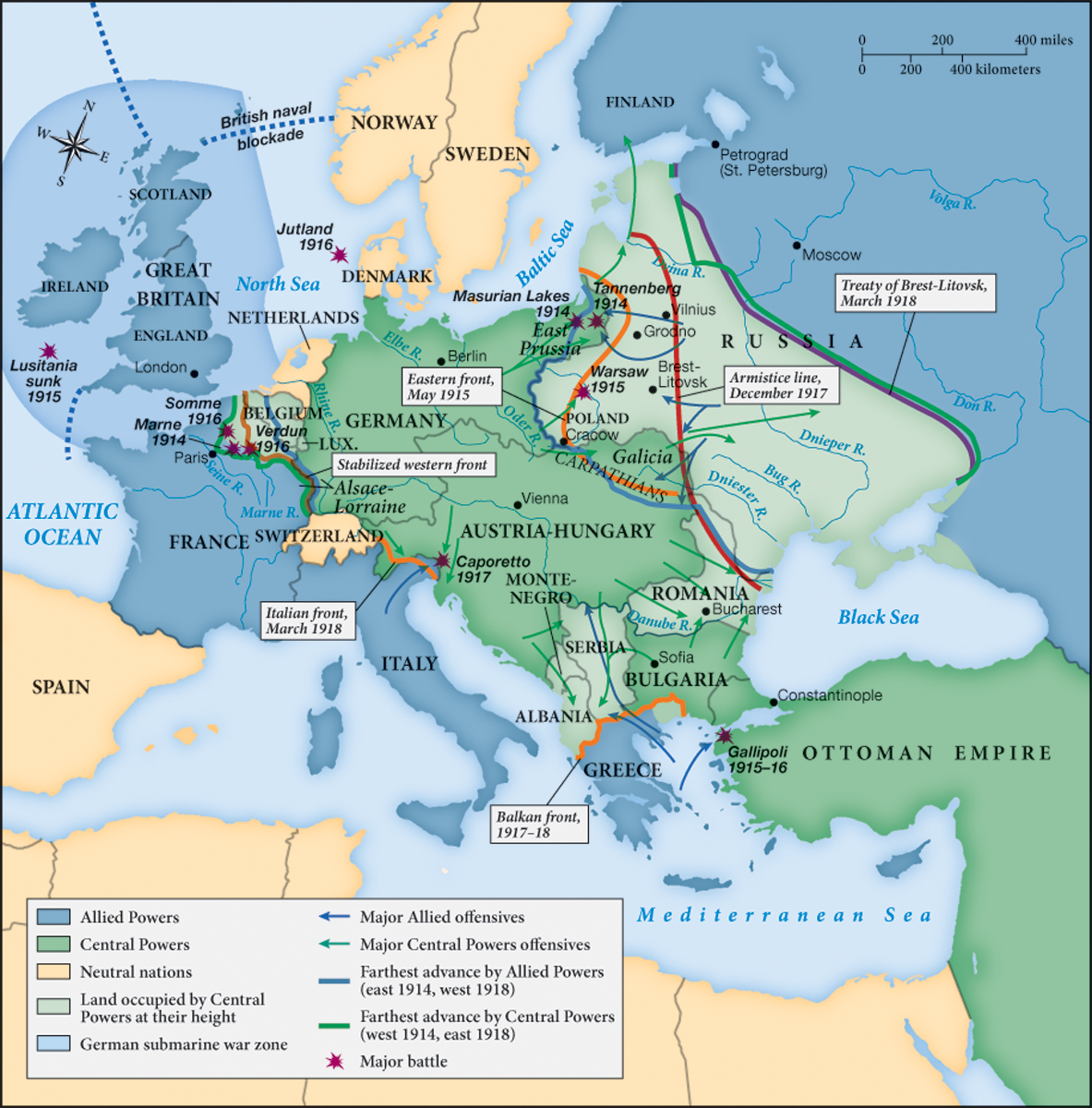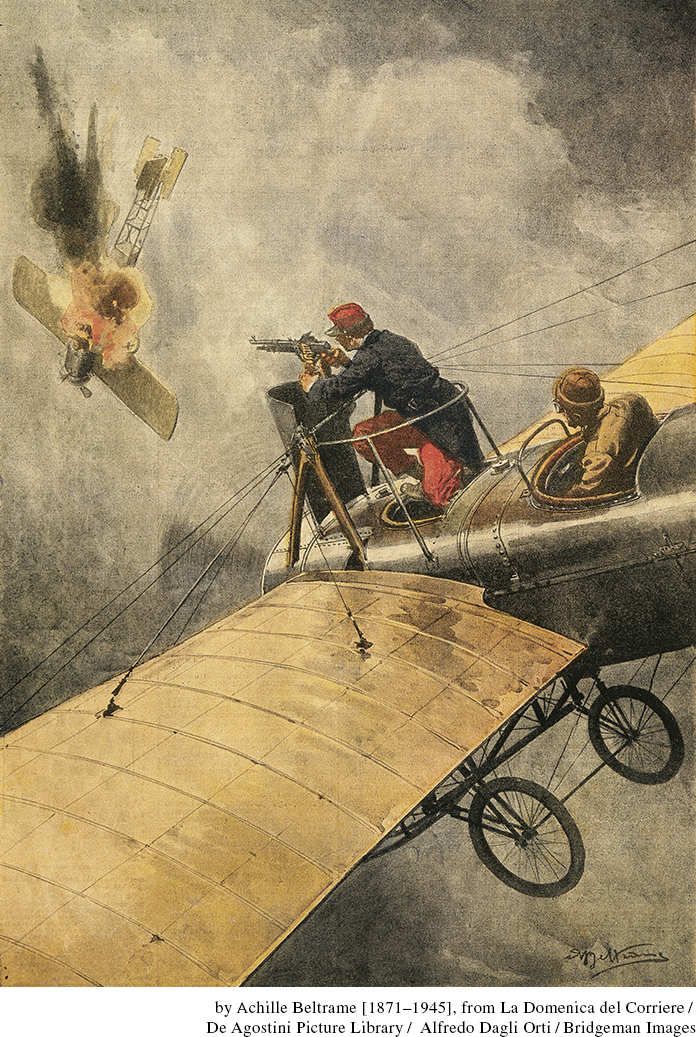Blueprints for War
Printed Page 822
Important EventsBlueprints for War
World War I’s two sets of opponents were formed roughly out of the alliances developed during the previous fifty years. On one side stood the Central Powers (Austria-Hungary and Germany), which had evolved from Bismarck’s Triple Alliance. On the other side were the Allies (France, Great Britain, and Russia), which had emerged as a bloc from the Entente Cordiale between France and Great Britain and the 1890s treaties between France and Russia. In 1915, Italy, originally part of the Triple Alliance, joined the Allies in hopes of postwar gain. The war soon exploded globally: in late August 1914, Japan, eager to extend its empire into China, went over to the Allies, while in the fall the Ottoman Empire united with the Central Powers against its traditional enemy, Russia (Map 25.1).

Of the Central Powers, Germany wanted a bigger empire, to be gained by annexing Russian territory and incorporating parts of Belgium, France, and Luxembourg. Some German leaders wanted to annex Austria-Hungary as well. Austria-Hungary hoped to keep its great-power status despite the competing nationalisms of ethnic groups within its borders. Among the Allies, Russia wished to reassert its status as a great power and as the protector of the Slavs by adding a reunified Poland to the Russian Empire and by taking formal leadership of other Slavic peoples. The French, too, craved territory, especially the return of Alsace and Lorraine, ceded to Germany after the Franco-Prussian War of 1870–1871. The British wanted to cement their hold on Egypt and the Suez Canal and keep the rest of their world empire secure. By the Treaty of London (1915), France and Britain promised Italy territory in Africa, Asia Minor, the Balkans, and elsewhere in return for joining the Allies.

The colonies participated in the war too, providing massive assistance and serving as battlegrounds. Some one million Africans, one million Indians, and more than a million men from the British commonwealth countries fought on the battlefronts. The imperial powers also conscripted uncounted numbers of colonists as forced laborers: a million Kenyans and Tanzanians alone are estimated to have been conscripted for menial labor in the battle for East Africa. Using Arab, African, and Indian troops, the British waged successful war in the Ottoman lands of the Middle East. In sub-Saharan Africa, the vicious campaign for East Africa cost many lives, including many civilians whose resources were confiscated and whose villages were burned.
Unprecedented use of new machinery determined the course of war. In August 1914, machine guns, fast breech-loading rifles, and military vehicles such as airplanes, battleships, submarines, and motorized transport (cars and trains) were all at the armies’ disposal. New technologies such as chlorine gas, tanks, and bombs were developed between 1914 and 1918. The war itself became a lethal testing ground, as both new and old weapons were used, often ineffectively. Many officers on both sides believed in a cult of the offensive, which called for spirited attacks against the enemy and high troop morale. Despite the availability of powerful war technology, an old-fashioned, heroic vision of war made many officers unwilling to abandon the more familiar sabers, lances, and bayonets. In the face of massive firepower, the cult of the offensive would cost millions of lives.